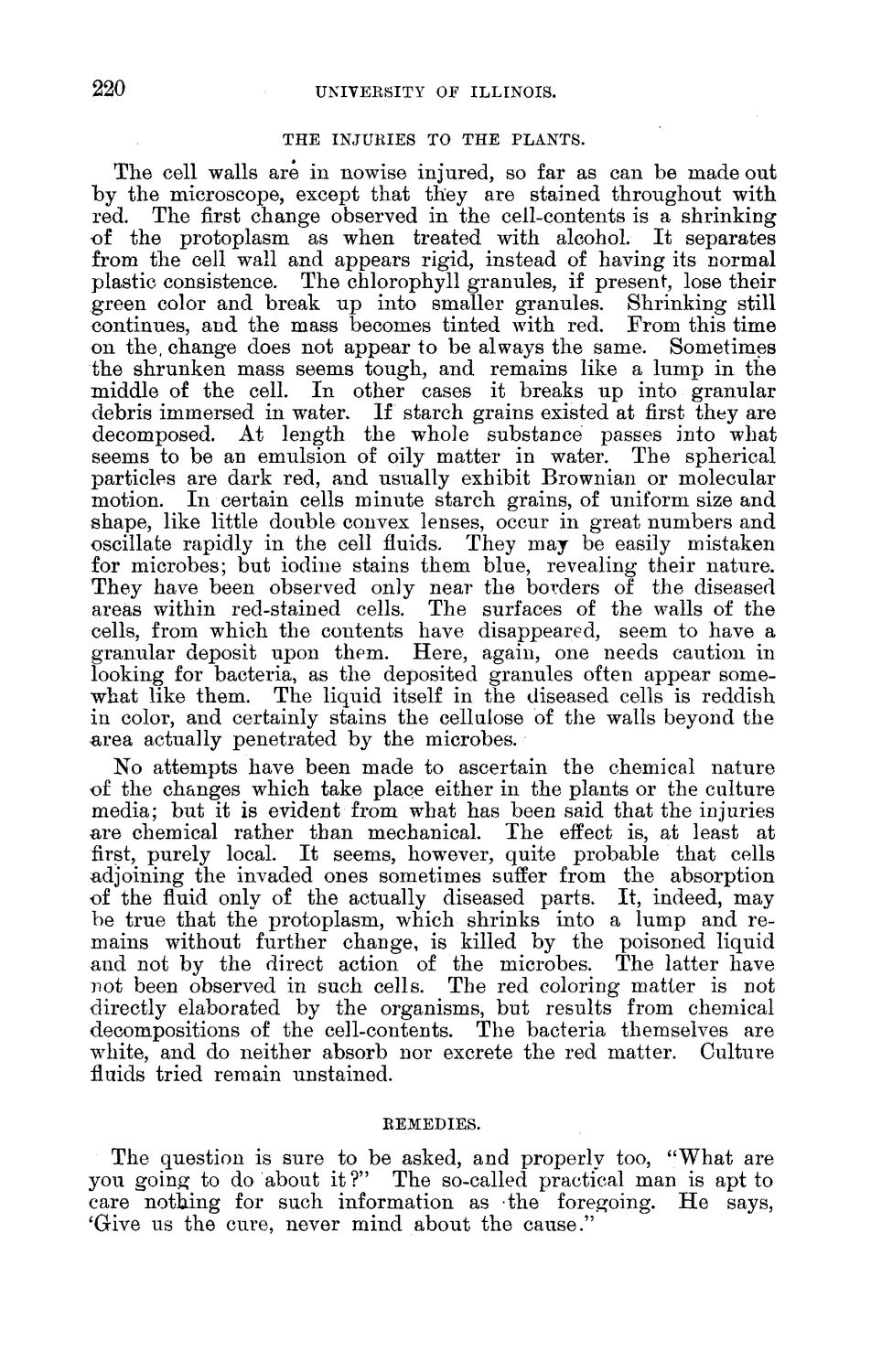| |
| |
Caption: Board of Trustees Minutes - 1888
This is a reduced-resolution page image for fast online browsing.

EXTRACTED TEXT FROM PAGE:
220 UNIVERSITY OF ILLINOIS. THE INJURIES TO THE PLANTS. The cell walls are in nowise injured, so far as can be made out by the microscope, except that they are stained throughout with red. The first change observed in the cell-contents is a shrinking of the protoplasm as when treated with alcohol. I t separates from the cell wall and appears rigid, instead of having its normal plastic consistence. The chlorophyll granules, if present, lose their green color and break up into smaller granules. Shrinking still continues, and the mass becomes tinted with red. From this time on the, change does not appear to be always the same. Sometimes the shrunken mass seems tough, and remains like a lump in the middle of the cell. I n other cases it breaks up into granular debris immersed in water. If starch grains existed at first they are decomposed. At length the whole substance passes into what seems to be an emulsion of oily matter in water. The spherical particles are dark red, and usually exhibit Brownian or molecular motion. In certain cells minute starch grains, of uniform size and shape, like little double convex lenses, occur in great numbers and oscillate rapidly in the cell fluids. They may be easily mistaken for microbes; but iodine stains them blue, revealing their nature. They have been observed only near the borders of the diseased areas within red-stained cells. The surfaces of the walls of the cells, from which the contents have disappeared, seem to have a granular deposit upon them. Here, again, one needs caution in looking for bacteria, as the deposited granules often appear somewhat like them. The liquid itself in the diseased cells is reddish in color, and certainly stains the cellulose of the walls beyond the area actually penetrated by the microbes. No attempts have been made to ascertain the chemical nature of the changes which take place either in the plants or the culture media; but it is evident from what has been said that the injuries are chemical rather than mechanical. The effect is, at least at first, purely local. I t seems, however, quite probable that cells adjoining the invaded ones sometimes suffer from the absorption of the fluid only of the actually diseased parts. It, indeed, may be true that the protoplasm, which shrinks into a lump and remains without further change, is killed by the poisoned liquid and not by the direct action of the microbes. The latter have not been observed in such cells. The red coloring matter is not directly elaborated by the organisms, but results from chemical decompositions of the cell-contents. The bacteria themselves are wThite, and do neither absorb nor excrete the red matter. Culture fluids tried remain unstained. REMEDIES. The question is sure to be asked, and properly too, "What are you going to do about i t ? " The so-called practical man is apt to care nothing for such information as the foregoing. He says, 'Give us the cure, never mind about the cause."
| |